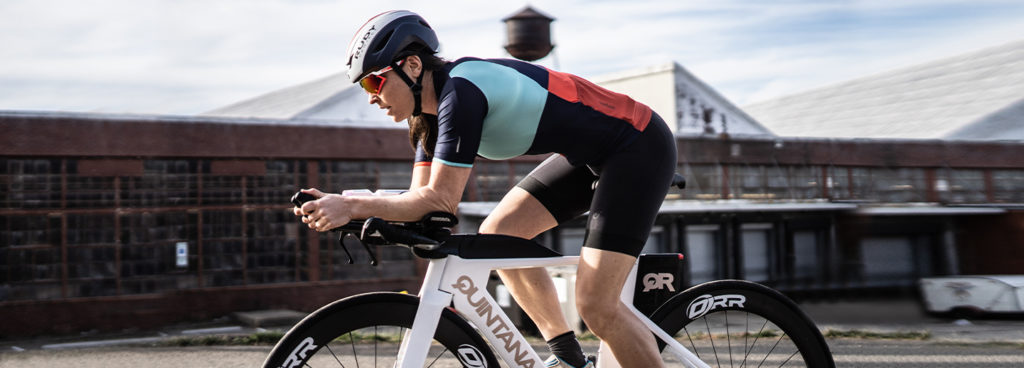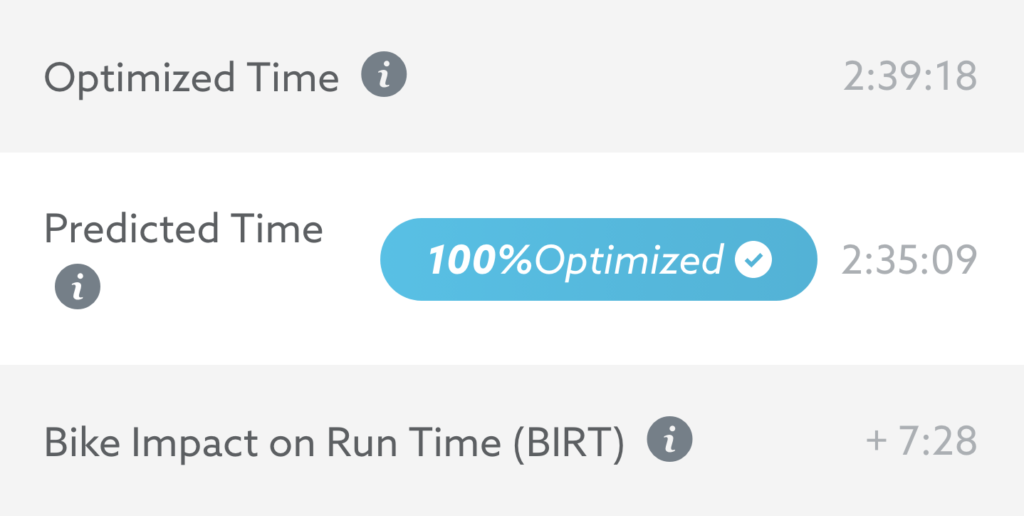5 Tips for “Free Speed”
Are You Employing Them All?

As triathletes with a goal, we work hard to improve our fitness so we can perform better than ever at our next race. But while “the engine” is the most important piece of “equipment” we have, it’s not the only thing you should be paying attention to, especially because it’s harder and harder to improve your fitness as you get fitter. You can maximize your performance gains by addressing both your fitness AND a number of “free speed” strategies that exist. If you aren’t familiar with the term “free speed,” it refers to things that will make you go faster even if your fitness doesn’t change. It doesn’t mean it won’t cost you dollars (actually, some “free speed” strategies cost a lot of money!), but at least you won’t have to spend blood, sweat and tears to reap the rewards. Check out these 5 Tips for “Free Speed”:
1. Pick Up a Well-Fitting Sleeved Tri Kit
Wind tunnel tests have repeatedly shown that tri kits with a ¼ sleeve are faster than sleeveless kits, as long as they fit tight with few wrinkles. When in between sizes, get the smaller tri suit since you’ll avoid bagginess and wrinkles. Savings will vary but can be as much as ~10 watts, or 2 minutes, over a half Iron distance bike leg. Savings will be greater for the fastest athletes (>~22mph) because drag matters exponentially more as you ride faster, but are still meaningful for athletes riding in the middle of the pack. Buying a new sleeved Tri Suit isn’t cheap, but if you’re hunting podiums or a KQ and have a little budget to work with, it’s a solid investment.
Price: $150 – $300
Approximate Time-Savings over 70.3 distance: 2 minutes
2. Pace it Properly
Pacing can be tricky, but good pacing can save you several minutes over a 70.3 distance. You’ll shave time and also give yourself a competitive advantage over those in your age group who don’t pace as well as you. Overly aggressive pacing early can lead to a fading pace later in the race, and every 1 minute gained on the bike often leads to multiple minutes lost on the run due to overcooked legs. That’s where the concept of BIRT comes in, which stands for “Bike Impact on Run Time.” Here’s an illustration: triathlete Bill Bonker should ride at 85% of his FTP but he brazenly decides he can handle riding at 90% of his FTP. In this scenario, Bill will gain just over 4 minutes on his bike time but lose nearly 7 ½ minutes on his run, for a net loss of about 3 ½ minutes on his overall time. Pace it properly to avoid those losses and achieve faster times with the same fitness!


Price: Free
Approximate Time-Savings over 70.3 distance: 3 ½ minutes
3. Consider Bike Upgrades – Aerohelmet, Aerowheels, Aerobike
They’re not cheap, especially aerowheels or a new bike, but if you want to “ball out” and you have a hefty budget to spend on gear upgrades, you can find some “free speed” here. Aerohelmets are the cheapest and will provide the biggest bang for your buck since they provide upwards of 10 watts of savings for “just” a $100-$250 investment. Aerowheels, on the other hand, will reduce your CdA by about 4%, saving you about 5 watts, or about 1 minute over 56 miles. Note that the time savings is typically less than for an aerohelmet, despite the cost of aerowheels being far greater. Aero frames are even more extreme in that you might spend many thousands of dollars but you will only yield a very small gain due to the improvement in aerodynamics. The frame itself accounts for such a small percentage of overall drag; the rider accounts for about 70% of drag, so what is more important is making sure you are fit well to your bike. “Well” means you have found the optimized balance between comfort, power and aerodynamics. Unless you have cash to burn, only the aerohelmet seems to make much sense from a dollar-to-time-saved standpoint.
Aerohelmet Price: $100 – $250
Aerowheels Price: $1k – $2k
Aero frame Price: $2k – $15k
Aerohelmet Approximate Time-Savings over 70.3 distance: 2 minutes
Aerowheels Approximate Time-Savings over 70.3 distance: 1 minute
TT Bike Approximate Time-Savings over 70.3 distance: ½ minute
4. Lose 10lbs (if you have it to lose)
At any triathlon, there are inevitably men and women walking around with an extra 10 or 20 pounds around their waist who are also walking around with very expensive equipment featuring the latest innovations in lightweight technologies. Those expensive inventions typically only add up to a pound or two of savings and could cost you thousands of dollars, but losing 10lbs costs you $0 (it might even save you some money on food!) and requires no improvement in fitness. Losing some weight is perhaps the greatest way to improve your performance, if you have the weight to lose, of course. If you’re already lean with a low body fat percentage, then shedding pounds can get you into trouble, like RED-S.
How much faster will you go? You should expect to gain about 1.4 seconds per mile on the run for every pound lost, or a little over 3 minutes for a 70.3 run leg. The bike gets a little trickier to estimate because you’re on wheels and momentum will come into play, especially when hills are involved. For a flat course like Galveston 70.3 or Eagleman 70.3, you may only gain about 30 seconds if you weigh 10lbs less, but on a hillier course like St. George, you could gain 2 ½ minutes or more, as seen in Figure 3 below.
Price: Free
Approximate Time-Savings over 70.3 bike leg: ½ – 3 minutes
Approximate Time-Savings over 70.3 run leg: 3 minutes

70.3 course.
5. Dudes, shave your legs!
Set the ego aside, put on some Italian opera “Breaking Away”-style, and get out the razorblade. Especially if you rank high on the “Chewbacca Scale.” Ever since Jesse Thomas famously tested shaving at the wind tunnel and gained 15 watts, it has repeatedly revealed power savings of 5-15 watts for those who shave down. Slower athletes who aren’t that hairy will see smaller gains while fast, hairy athletes will see big wattage savings. In any case, shaving costs nothing and will earn you some “free speed” in the range of 1-3 minutes over a 70.3 distance event.
Price: Free
Approximate Time-Savings over 70.3 distance: 1-3 minutes
